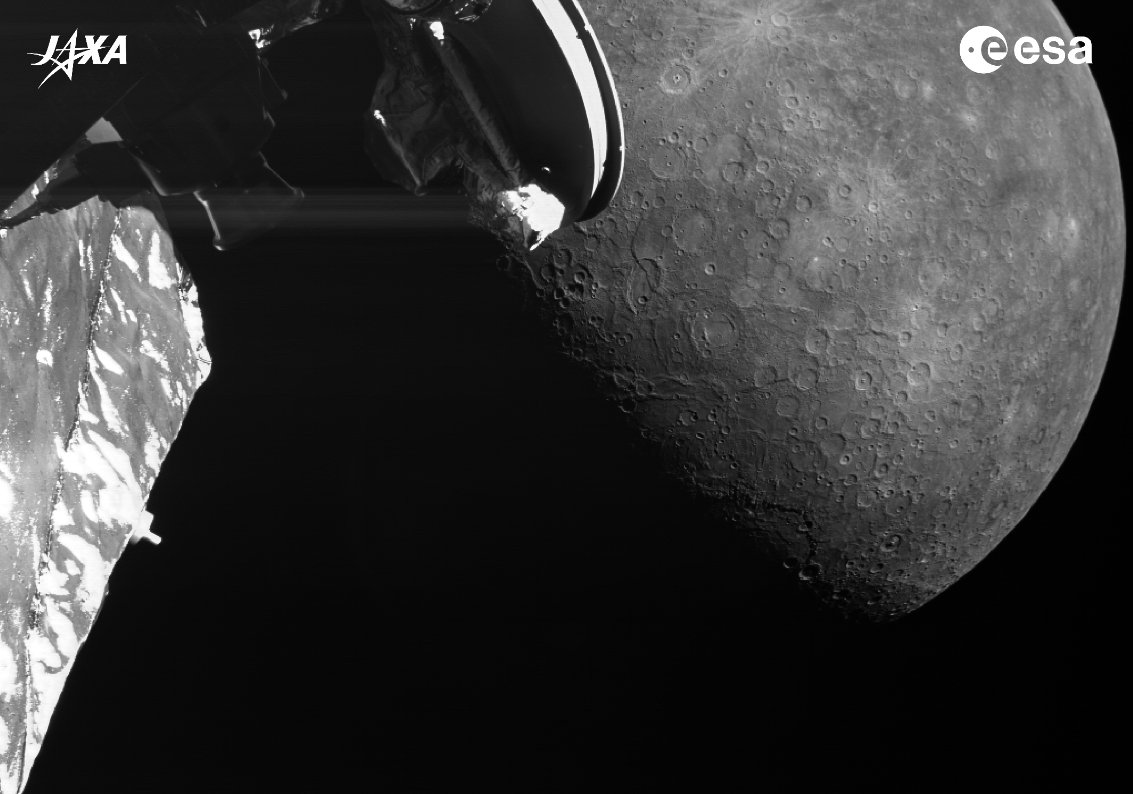Barely less than 240 kilometers is the distance that separated the Bepicolombo probe last night and the harsh surface of the small planet Mercury! Even if this is indeed its final objective, the mission was only passing: it will take another two and a half years before entering orbit. But in the meantime, the teams are taking advantage of it.
Because casually, the date is getting closer!
Brakes, brakes… BRAKES
The maneuver implies total confidence in the positioning system, but also in the automation of the sequence. The BepiColombo probe, which has been traveling in the inner Solar System since October 20, 2018, approached very close to the planet Mercury on June 19 at 9:34 p.m. Without contact with the Earth for several hours, it was to rotate a maximum of her instruments to the surface, which she was flying over at an altitude of about 236 kilometers, for the third time.
The images, taken from its control cameras, are impressive, but should not make us forget that it was above all a question of using Mercury to slow down! It is indeed a matter of gravitational assistance, an exercise as precise as it is delicate which saves hundreds of kilograms of fuel… at the cost of the time it takes to perform an overflight. For the BepiColombo probe, the time is approaching: there are just 30 months left before December 5, 2025 and its injection into orbit.
Bepi and Mercury will meet again
Until then, there is still a busy schedule, especially for the teams piloting the probe. The latter is indeed equipped with very efficient electric-ionic thrusters, but which must remain on and efficient for several months in a row to adjust the exact trajectory of BepiColombo. No question, therefore, of dealing with breakdowns during these very demanding phases.
It is from next summer that everything will get carried away, since the probe will fly over little Mercury three more times, in September, December and January, before preparing its final approach. He is happy to note that, four and a half years after his departure, everything is going well! Very few space vehicles have ever approached Mercury.
The scientific campaign is getting ready
For the moment, BepiColombo is still in travel configuration, in a “stack” (stacked, in French) with the propulsion module at the rear, the European MPO probe in the center and the Japanese Mio probe at the front, it – even protected by a releasable sun visor. This explains why the images of this overflight are still due to the “control” cameras and not to the high definition sensors of the scientific program, which are still well protected.
Much of BepiColombo’s instruments will only be used when the mission is in orbit of Mercury, although flybys such as those on June 19 are already used to calibrate the few sensors available. Mio’s instruments have even already provided some data with high scientific potential on Mercury’s magnetic environment.
In 2025, BepiColombo will succeed Messenger (NASA) and become the second mission around the closest planet to the Sun. But beware, it’s not just about making similar measurements: its scientific potential is much more ambitious!
Source : EarthSky

2